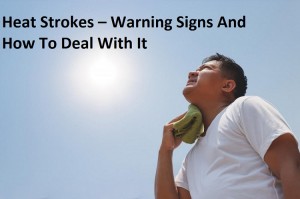

Heatstroke is a condition that is caused when the body overheats due to physical exertion or staying in higher temperatures. Heatstroke can turn serious if the body temperature soars to 40 degrees Celsius or higher. Heatstroke is common particularly in the Andhra Pradesh region of India. 1 out of every 5 people died due to heatstroke in India is from Andhra Pradesh. Between 2010 and 2015 1825 people from Andhra Pradesh have been reported dead due to heatstroke, accounting to 24% of All India figures. A study also says that there could be a 200 fold rise in heatwave exposures by 2100.
Symptoms of Heat Stroke include confusion, disorientation, no sweating, breathing issues, hallucinations, agitation, and coma. If you suspect someone having a heat stroke, understand it is an emergency and opt for immediate medical help. If a heat stroke is not treated promptly and properly it can be life-threatening. Do not compare heat stroke to stroke, a condition where the oxygen to the brain is decreased. The people who are known to be at a higher risk of heat stroke include Athletes, Infants, aged people, and those who work in extreme heat conditions. Even children or pets if left in the car for a long time unattended can be at the risk of getting a heat stroke.
First aid includes cooling the body temperatures primarily. Take the person indoor or in the shade. Remove excess clothing and use a tub of water or a cool shower or a sponge soaked in ice water to bring the temperature down. You may also use ice packs around the head, armpits, groin, and neck as well. If water is not available you may use the evaporation cooling technique in which misting cold water on the body while fanning warm air. If the patient tends to shiver then the doctor might give a muscle relaxant as well.
The best way to avoid is staying hydrated all the time, avoiding excessive intake of alcohol or over clothing in summer.

 Emergency Number
Emergency Number